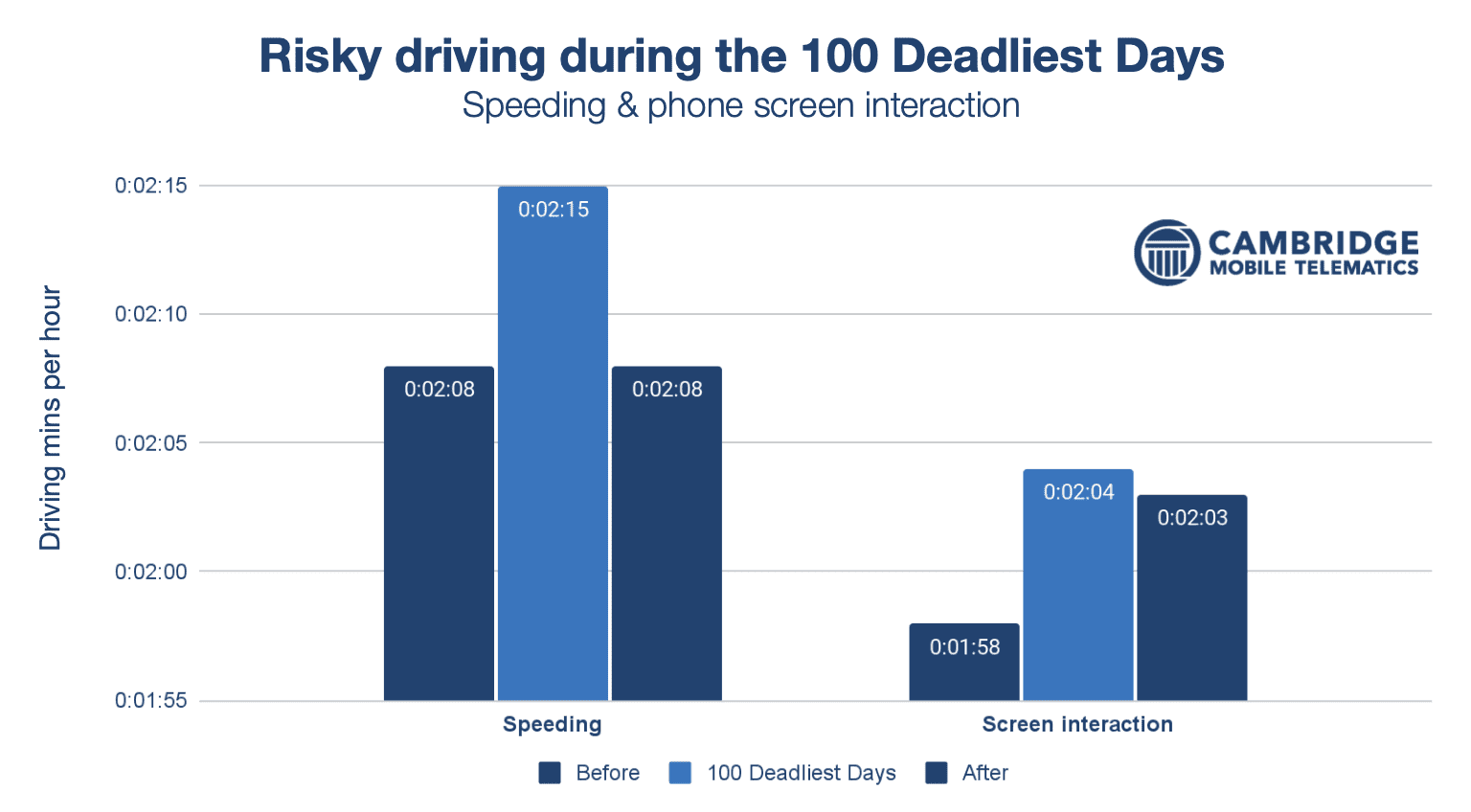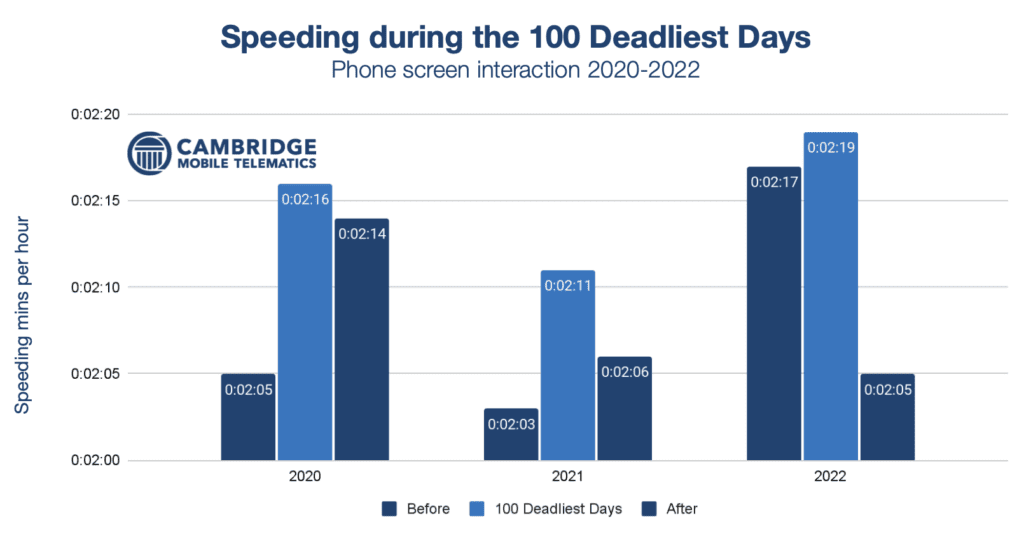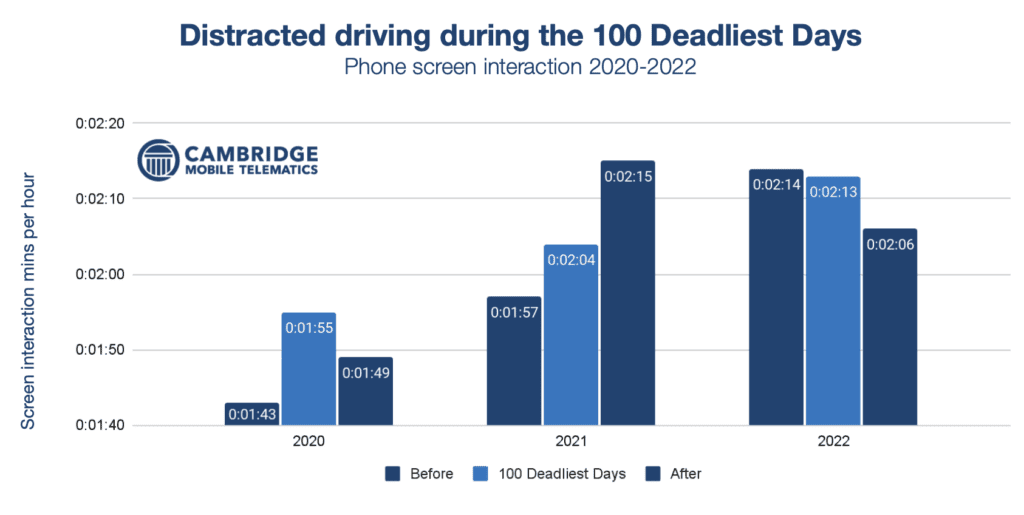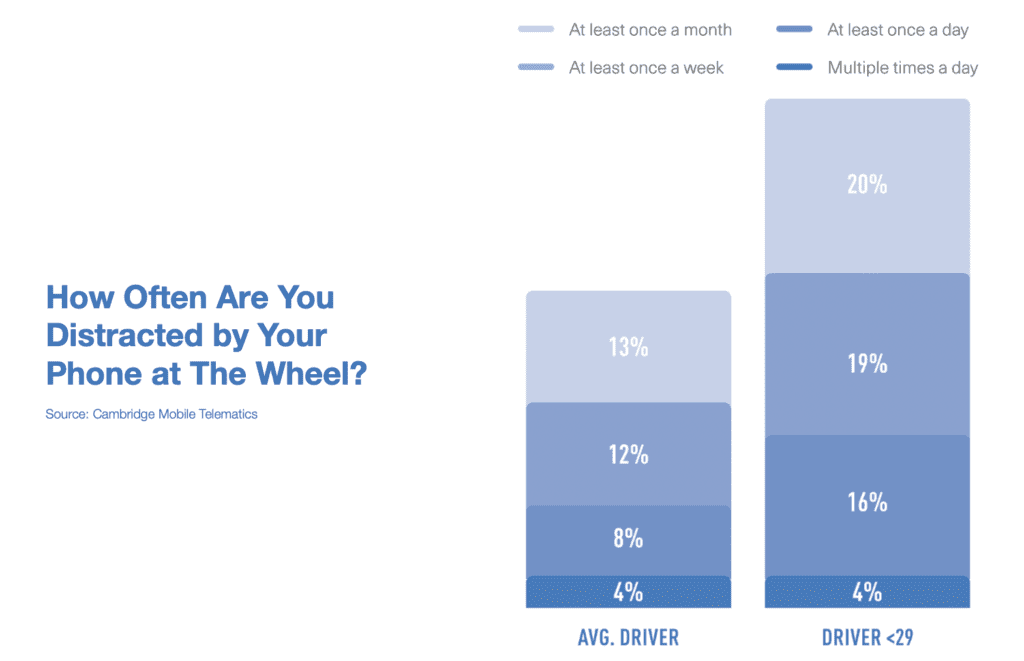New analysis: Risky behaviors surge during the 100 Deadliest Days

Nearly half of all teenage auto fatalities happen during what is known as the 100 Deadliest Days, which runs from Memorial Day through Labor Day. From 2012 through 2021, over 7,300 people were killed on the road in teen-related crashes during the summer. In 2021, nearly 900 people died in these types of crashes during the 100 Deadliest Days, a 25% increase over 2019.
What’s driving this increase in fatalities? To better understand the increase, CMT analyzed speeding and screen interaction data from 2020 through 2022 during the 100 Deadliest Days, comparing it to the 30 days before and after.
The analysis reveals that both speeding and screen interaction increase during the 100 Deadliest Days. In the 30 days before Memorial Day, drivers spend an average of 2 minutes and 8 seconds speeding for every hour on the road. From Memorial Day to Labor Day, that rate jumps to 2 minutes and 15 seconds, a 5.5% increase. After Labor Day, it falls back to 2 minutes and 8 seconds.
Screen interaction, which can be anything from texting to emailing, scrolling on social media, changing a song, to playing a game, increases by a similar amount. Compared to the 30 days before Memorial Day, drivers spend 6 more seconds interacting with their phone during the 100 Deadliest Days, reaching 2 minutes and 4 seconds per hour, a 5.1% surge. Distraction falls slightly after Labor Day.
Increased speeding and screen interaction is a deadly mix. At the height of the pandemic, the total number of crashes fell. However, as time spent speeding surged by over 60% and distraction time increased over 18%, fatalities rose. In 2021, traffic fatalities reached 42,915, the highest number since 2006. The fatality rate per 100 million miles traveled escalated to 1.3 in 2020, a 21% increase over 2019 and the highest rate since 2007. Pedestrian fatalities also set a 40-year high in 2021 with 7,485 auto-related deaths.
To understand the impact of distracted driving, CMT analyzes the driving risk of millions of drivers and compares it against real crashes. We’ve found that for every 10% increase in distracted driving, the crash rate increases by 1.4%. CMT estimates the increase in screen interaction during the 100 Deadliest Days would cause an additional 27,000 crashes, 60 fatalities, and $650 million in economic damage.

The surge in risky behaviors during the 100 Deadliest Days has changed since 2020. In 2020, speeding increased by 11 seconds during the summer. The increase was 8 seconds in 2021 and 2 seconds in 2022. The return to lower levels after the summer has also fluctuated. The biggest change came last year when speeding fell from 2 minutes and 19 seconds to 2 minutes and 5 seconds after Labor Day, a 14-second drop.

Screen interaction has seen more variability. In 2020, distraction increased by 12 seconds during the 100 Deadliest Days. In 2021, it rose by 7 seconds, only to continue its climb after Labor Day by another 11 seconds. 2022 was the opposite when distraction gradually fell after Memorial Day and then again after Labor Day.

The CMT DriveWell Fusion® Platform captures the physics of smartphones, IoT devices, and connected vehicles through sensor data. It doesn’t measure demographic data from drivers. To understand the difference in driving patterns among drivers under 30 years old, CMT conducted a survey of over 1,000 people earlier this year. We found that young drivers are 63% more likely to send text messages while driving than the average driver. They’re also 33% more likely to make phone calls while driving.
The official kickoff of the 100 Deadliest Days, Memorial Day, also sees an increase in screen interaction. The average Monday 30 days before and after Memorial Day experiences 1 minute and 59 seconds of screen interaction. From 2020 through 2022, screen interaction on Memorial Day increased by 4 seconds to reach 2 minutes and 3 seconds, a 3.4% increase. Screen interaction on Memorial Day in 2020 rose by 11 seconds, from 1 minute and 49 seconds to 2 minutes, a 10% jump.